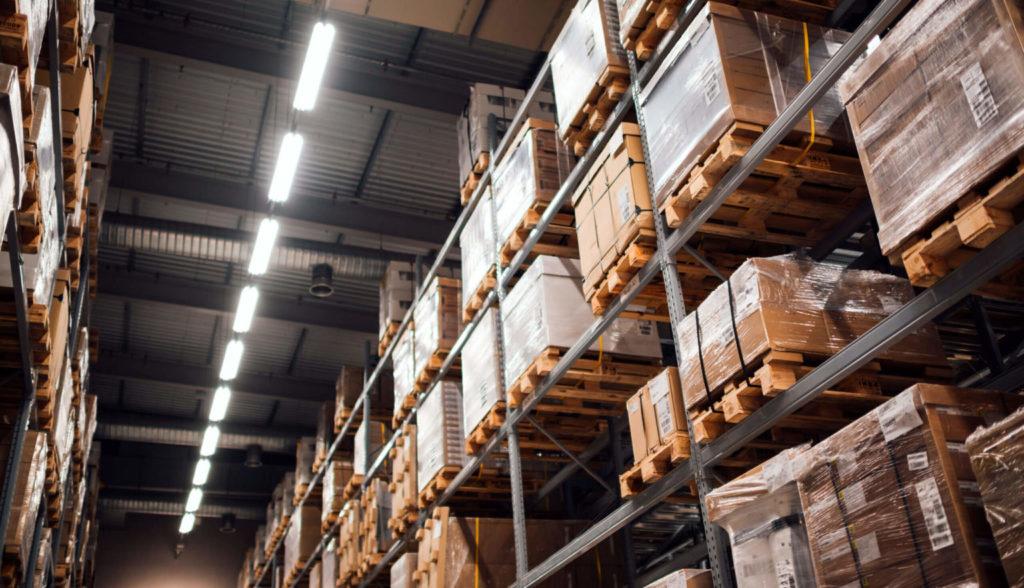When starting a business, every owner must consider the need for a warehouse. It is a location where they can store goods and carry out all necessary processes to verify that the goods are of sufficient quality and meet shipping requirements. So, how big is a shipping warehouse? Are there any ways to find out how much warehouse space you need? This article will give you some useful information to decide your shipping warehouse’s size.
What is the average warehouse’s size?

There are no standard warehouse dimensions and sizes since it depends a lot on each business. Besides, it also varies from time to time with changing market needs. However, you can still have data on average warehouse size for references.
According to wh1.com, the average American warehousing unit is now greater than 25,000 square feet compared to 10,000 square feet warehouses in the past. Only approximately a third of warehouses are smaller than this, while more than half of existing warehouses are 50,001 square feet or larger. In addition, most warehouse construction in recent years has been developed to 28 to 36 feet ceiling following data from wsj.com. However, this is not a standard warehouse height since it still depends on how big that the warehouse and storage need to be to figure out the suitable height.
What factors affect how big is a shipping warehouse?

Your industry needs
Different industries will have different needs for warehouse sizes, depending on the products and warehouse’s function. For example, manufacturing warehouses must be open, wide-spaced, and big enough to support the huge machinery that executes the major production operations.
On the other hand, some industries such as retail, pharma, and eCommerce sectors require a large amount of space to store, distribute, and ship items (other industries can need storage and shipping warehouses as well). This is where storage and shipping warehouses come into play. These are also known as distribution centers, and they include office space, loading docks, and power. Warehouses for distribution comprise more than half of the total number of industrial properties.
Furthermore, other businesses, such as automobiles and electrical gadgets, require their products to be displayed, thus they will typically purchase a warehouse and convert it into a showroom. Construction organizations and others who deal with exhibiting project models to clients are known to lease warehouses to make use of the large open space that comes with them. It allows companies to have enough manufacturing and storage space while also allowing them to display their products.
Your required warehouse process
Your warehouse management process will affect the way you arrange warehouse layout and size since the warehouse processes will define how a substantial percentage of your warehouse’s space is used. It depends on the type of goods and their flow from receiving to shipping or from manufacturing to shipping. If each step in your process requires a separate space to function, the more steps you have to go through, the bigger the warehouse you need. However, if you clearly understand your warehouse workflow, you may be able to uncover more effective ways of doing things, reducing your total order cycle time and even the amount of necessary space.

Your required inventory level
A large portion of your warehouse space will be determined by the amount of inventory you need to continue in business. Keeping too much or too little inventory can affect warehouse operation and your business performance. Too much inventory can cost too much money, take up too much space on shelves, and eventually become unsellable.
On the other hand, having insufficient supply might result in stockouts and backorders, lowering consumer satisfaction. You always have to keep an optimal inventory level in the warehouse to run the business. Therefore, you have to consider this factor when deciding your warehouse’s size, the warehouse space at least should have enough space for this optimal stock amount. Nowadays, with the help of an ERP system, determining your appropriate stock level has never been easier. Almost every company with a warehouse has implemented ERP software to help them manage their operations.
In addition, once you have a good understanding of your existing inventory requirements, see if there are any ways to make better use of the space you have set aside for inventory than you are now.
Business growth
As a business owner, you constantly want to grow and expand your business as soon as possible. So when you have a plan to build up a new warehouse, it is critical to keep business growth in mind. It will be more costly to construct a new one than build up an original warehouse with enough space for expansion in the future.
Warehouse’s storage capacity
It is obvious that the real storage capacity of the warehouse is not equal to the warehouse’s size. To make the warehouse function, you need to divide it into different areas with different functions. You can calculate warehouse storage’s capacity to see whether it matches your storage needs or not.
To begin, determine the total warehouse square footage of your warehouse. Then deduct the entire square footage of storage space that will not be utilized. Next, determine the height of your warehouse to determine how high your goods can be stored. Finally, multiply the entire square footage of usable area by the height to get the total cubic meter storage capacity.
How to maximize warehouse storage

It is easier to get a bigger warehouse than trying to maximize it if you don’t care about the cost. However, cost management is very important in any business operation if you want to be efficient. You can even reduce cost by maximizing warehouse storage in the following ways:
- Reorganize walkways, pallet racks, and shelving to make the most of your available space
- Try to increase your clear height when possible
- Allow for fluctuations in inventories (such as seasonality and supply chain disruptions)
- Make space for future expansion
- Try to make the most of existing spaces by transforming them into flexible offices or other temporary functions
To sum up
In summary, if you are looking for a location to build a warehouse and start your distribution business, you have to think about how big a shipping warehouse is and what its optimized storage capacity is. There are so many factors that you need to examine to design a reasonable warehouse size and layout. Understanding your company’s needs and products is crucial. On the other hand, you also need to maximize your warehouse capacity to get more storage space and reduce costs for your business.













